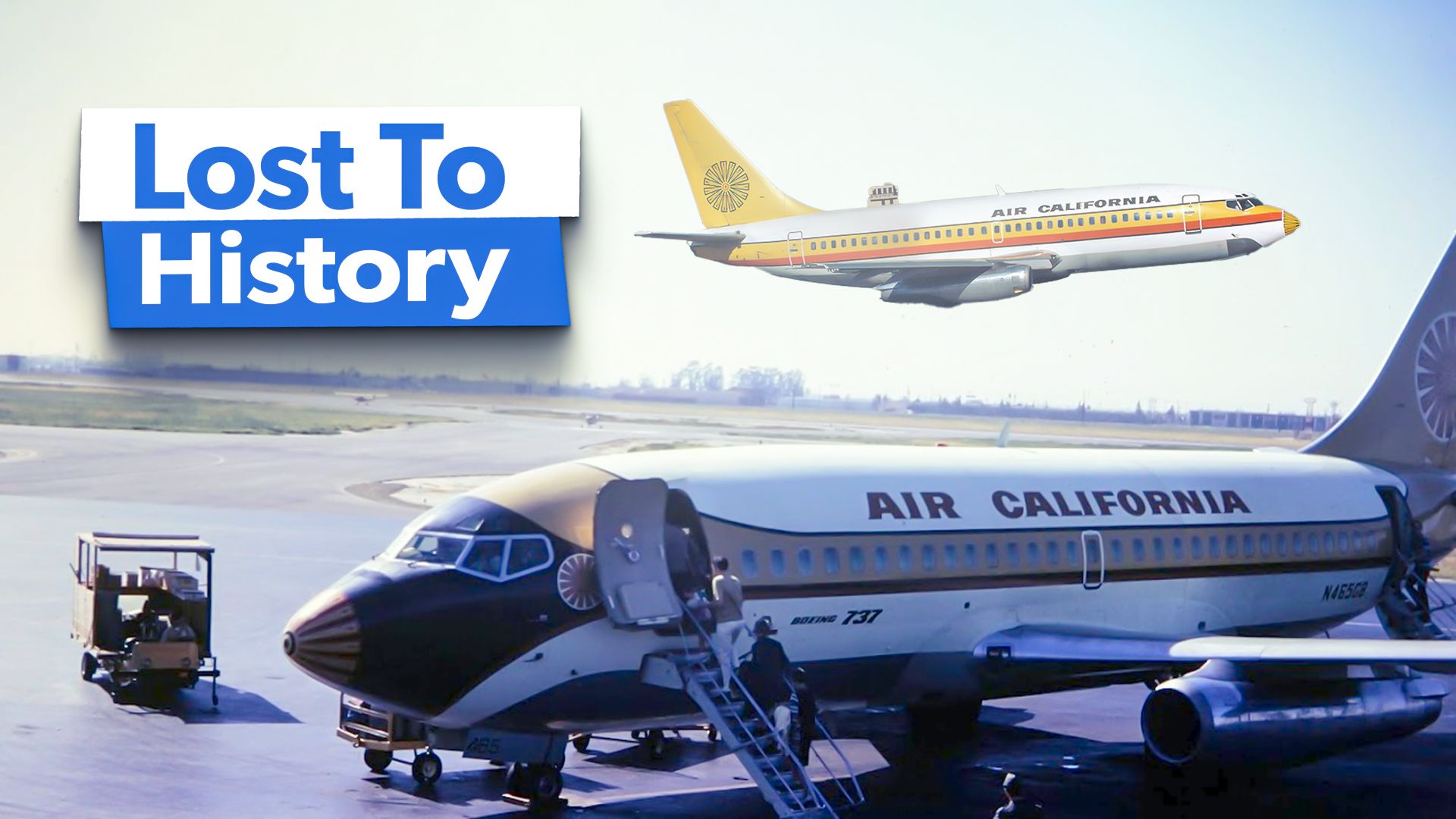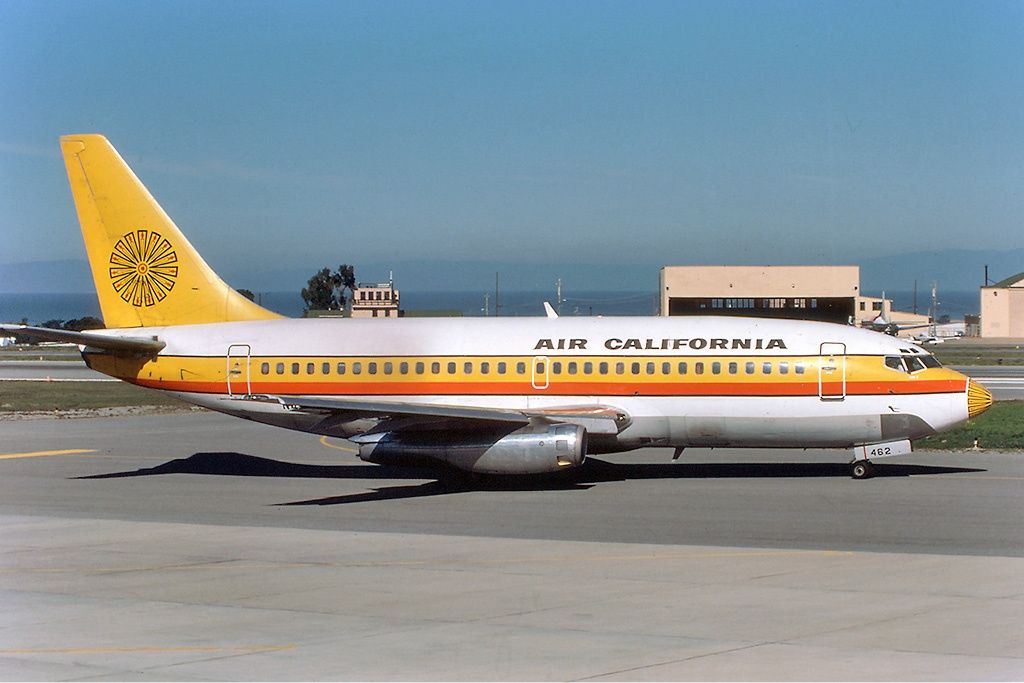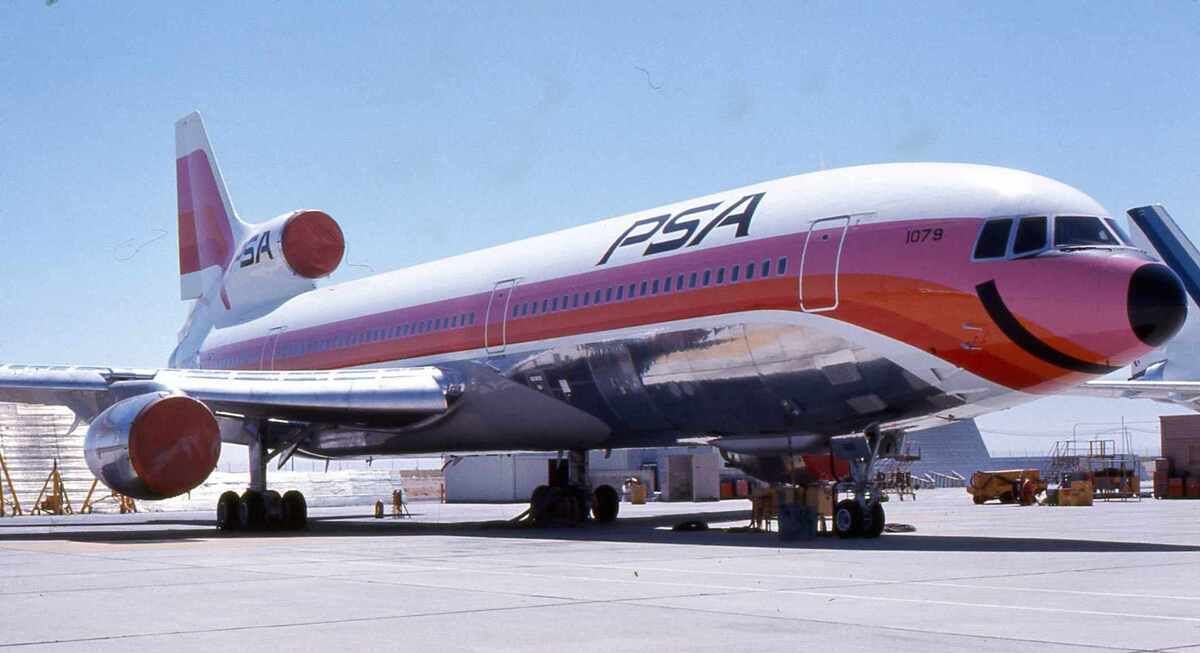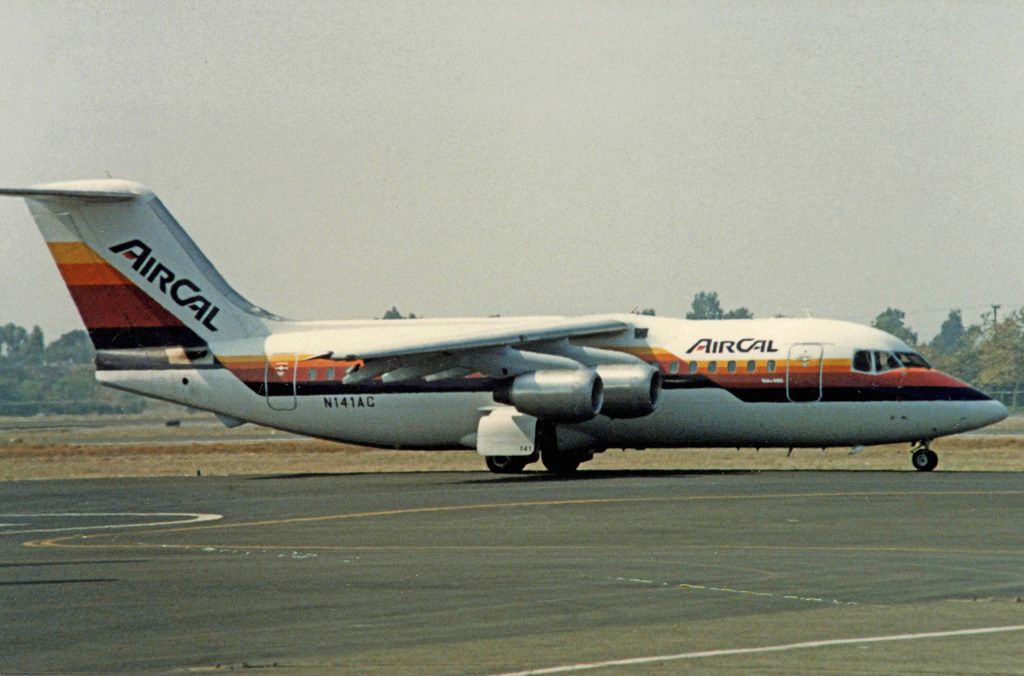Summary
- Air California began flying in the 1960s, operating California flights with a focus on Orange County.
- Financial struggles in the late 1970s led to merger and rebranding efforts for the carrier.
- Despite its eventual merger with American Airlines, AirCal left a limited legacy influencing the US aviation industry.
During the late 1960s, 1970s, and early 1980s, Air California, which would later become known as AirCal, was a key player in the region's air market. Despite becoming a relatively large airline for the better part of two decades, the carrier's story is mostly lost in public memory, with some remembering the airline's slightly more well-known competitor, Pacific Southwest Airlines (PSA).
The airline originated as an intra-California airline which attempted to connect key population centers throughout the state with a hub at what was then known as Orange County Airport. Following the deregulation of the commercial aviation industry in the late 1970s, the carrier decided to pursue expansion, opening routes beyond the state's borders.
By the late 1980s, however, the carrier's outlook had changed. It was eventually merged into the larger American Airlines, after which time it was mostly forgotten. In this article, we will take a deeper look at Air California's story.
Humble origins
The story of Air California began in a 1965 meeting in which the company's founders discussed the potential for a new airline to break into the market between the San Francisco Bay Area and the greater Los Angeles metropolitan region. With a lack of service from competitors, the airline sought to begin flights from the rapidly growing Orange County area.
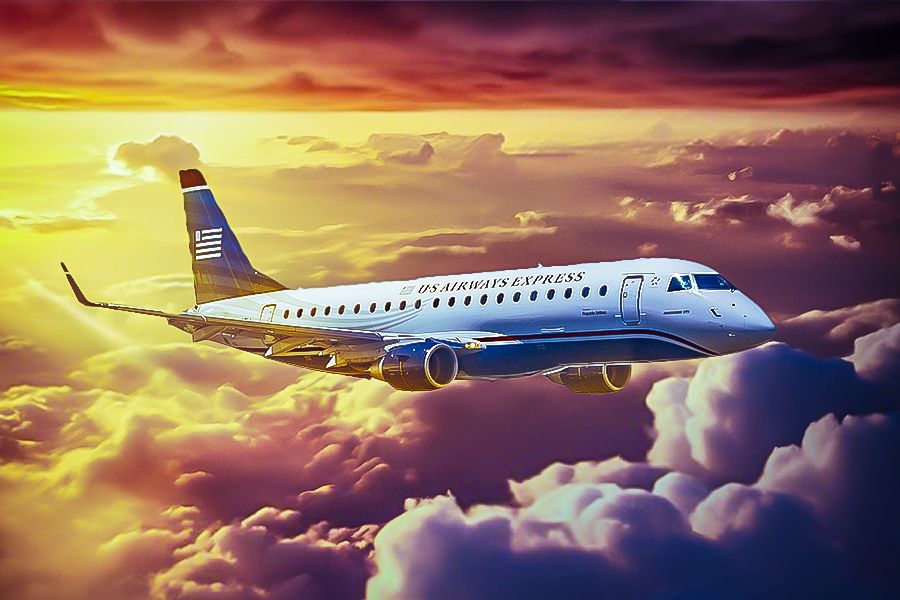
What Happened To US Airways?
The airline might not exist as a separate entity, but its rich legacy still endures as one of the pioneers of commercial aviation in the US.Like its rival Pacific Southwest Airlines, the carrier aimed to primarily operate flights within the state, and the company quickly incorporated under this model in 1966. The company swiftly gained approval from the California Public Utilities Commission (CPUC) to begin flying on its proposed inaugural route.
Operations soon commenced in 1967, with the carrier flying between San Francisco and Orange County using Lockheed Electra aircraft, according to John Wayne Airport (SNA). The following year, the carrier expanded with new routes launched to San Jose and Oakland and upgraded its fleet to include DC-9s and Boeing 737-200 jets. By the time the 1970s rolled around, the carrier had established its unique niche within the California market.
Cycles of instability and financial distress
In 1969, the airline's struggles began to emerge, even as the airline had begun to identify its target market. The carrier attempted to merge with Pacific Southwest Airlines (PSA), a deal that would later be blocked due to regulatory concerns. Prior to the Airline Deregulation Act of 1978, regulatory authorities were extremely hesitant to approve large-scale mergers.
Soon after the first failed merger attempt, the Westgate-California Corporation (WCC) acquired a majority stake in the carrier by 1970, a capital infusion that helped keep the struggling company operational. However, controversial businessman C. Arnholt Smith was at the helm under this firm's ownership, and significant financial losses quickly followed.
All while handling these challenges, the carrier continued to expand both its fleet and network and introduced new services like first class. By 1971, the airline had become so reputable that Southwest Airlines sought it out during its early years for flight attendant training.
In 1972, the airline attempted a second merger with PSA due to continued financial difficulties but was once again blocked in its pursuit. To end these cyclical struggles and maintain the airline's independence, the company sought financial regulation by the California Public Utilities Commission (CPUC).
The airline was also supported by a CPUC-sponsored duopoly at Orange County Airport, which allowed it to dominate a few key strategic routes from the facility, according to published reports from the commission. Nonetheless, financial issues would continue to take their toll.
In 1981, Air California rebranded, changing its name to AirCal and finding new ownership under AirCal Investments, a firm led by real estate developers William Lyon and George Argyros. This restructuring included dozens of cost-saving measures and adjustments to the carrier's route network, leading to continued profitability.
The carrier had once again returned to its strong position within the California market, but its fortunes would again take a turn for the worse. By 1981, the airline's fleet included all the following aircraft:
- Boeing 737-100
- Boeing 737-200
- McDonnell Douglas DC-9-14
- McDonnell Douglas MD-81
- McDonnell Douglas MD-82
Final years and legacy
AirCal's fleet in the early 1980s primarily consisted of Boeing 737-200s, which were later supplemented by MD-80 jets and older 737-100s. By 1984, the carrier ordered newer 737-300s and used gas-guzzling BAe-146s to meet the more stringent noise regulations of the time.
Despite initial profitability, the company began to suffer amid increased competition in the market, with Continental West entering the market in 1985. Fare pressures and financial issues returned to the carrier shortly after, and it went through yet another restructuring in 1985 before finally accepting a purchase offer from American Airlines for $225 million in 1986. On July 1st, 1987, the carrier officially ceased independent commercial operations, according to the Los Angeles Times.
Air California left a limited legacy once it departed from the market, and competing carriers quickly raised fares amid their competitor's exit. Soon after, however, United Airlines and Southwest Airlines both entered the regional market, leading to a quick decline in fares.
Get all the latest aviation news right here on Simple Flying!
Soon after, amid hefty competition and excess turmoil from the Gulf War that raised jet fuel prices, American quickly dismantled AirCal's network and redistributed its assets. Pacific Southwest Airways survived for a brief time longer, and Southwest Airlines later took significant influence from the defunct airline.
The two businessmen, Lyon and Argyros, who had managed to profit from their investment in AirCal, marked a turning point in the US aviation industry. For the first time, outsiders were able to perform a profitable divestment backed by impressive decision-making skills amid industry turmoil.

